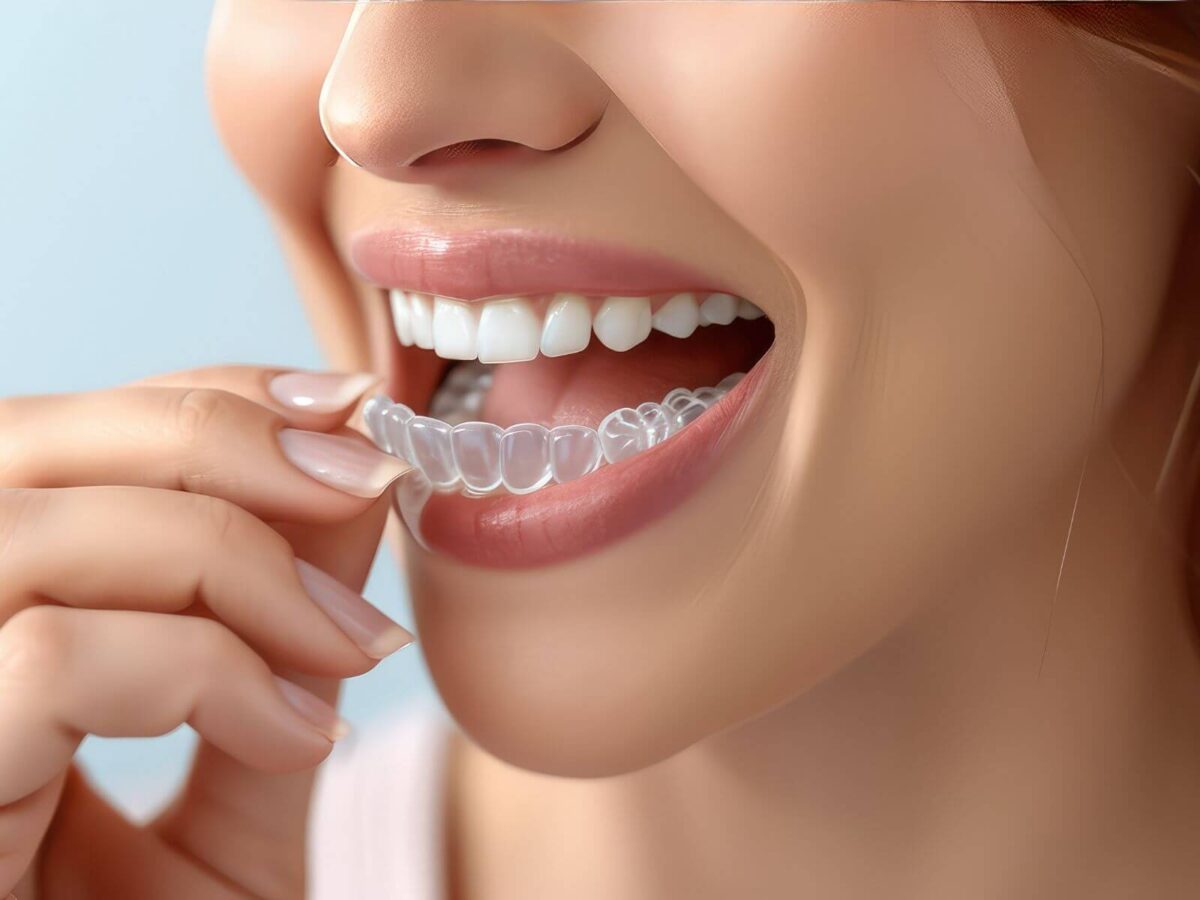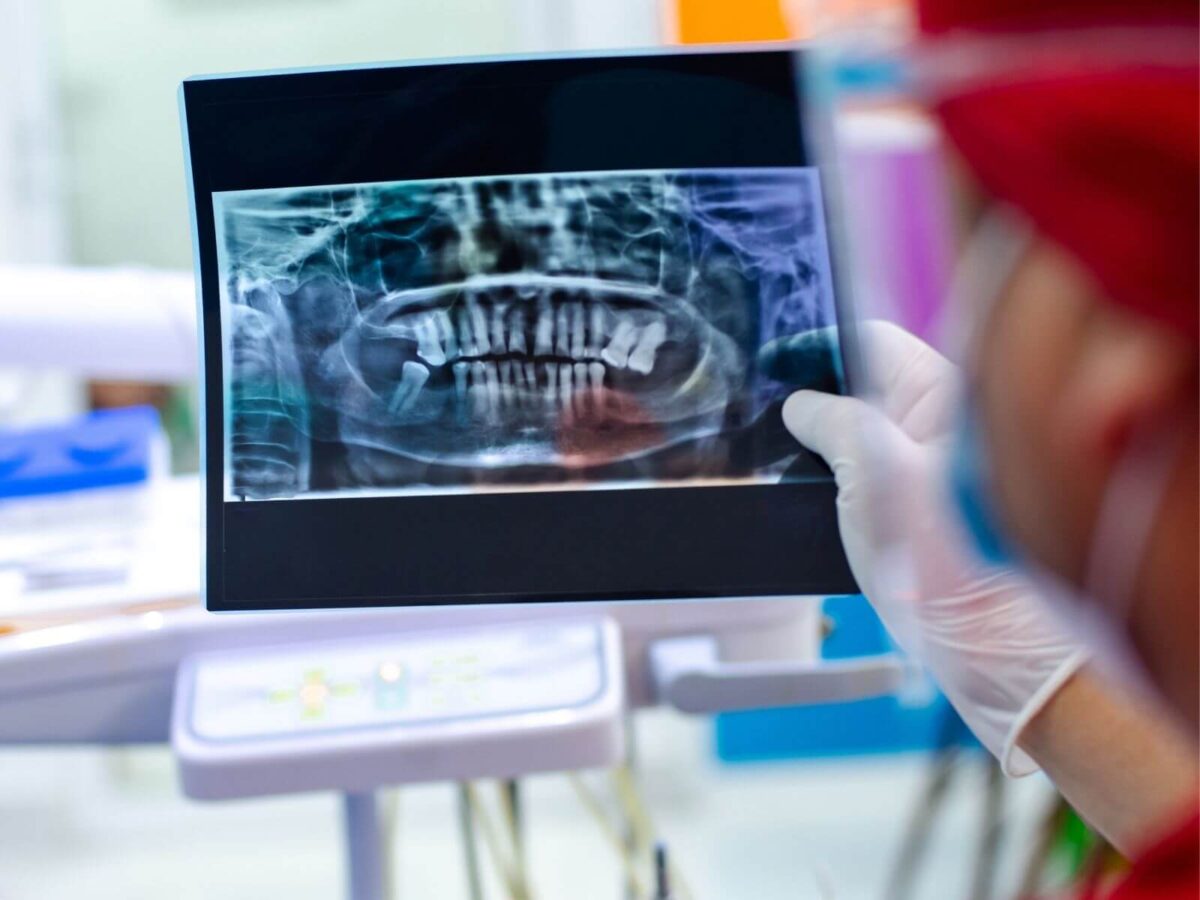Clear aligners are an advanced therapy for that ideal, more stunning smile. Clear aligners are nearly invisible and easy to wear and have dramatically changed the field of orthodontics. This comprehensive guide will help you know how it works, the process, and how they are more effective than traditional braces to make the right decisions for your dental treatment.
What are Clear Aligners?
Clear Aligners (invisible braces) are a group of relatively translucent and individually trimmed retainers that intimately fit your teeth.
They use continuous, albeit mild, pressure on the teeth to align them properly and achieve optimal alignment. Clear teeth aligners ensure you attain the perfect teeth you have always wanted.
Dental aligners are trays created from a special transparent medical-grade plastic that does not confine you like a brace with its wire and bracket.
The first advantage of clear aligners is that the treatment is comfortable, unobtrusive, and free from pain of any form, unlike many other alignment solutions.
How do Clear Aligners Work?
Clear aligners are the perfect solution for misaligned teeth. Clear aligners are designed to fit around the teeth, and pressure is applied to your teeth to bring them to the needed alignment.
These specific multiple aligners require two weekly replacements since your teeth constantly shift their positions to form the correct occlusion with the jaws.
Like all other treatments involving orthodontic appliances, clearance aligner treatment begins with examining the oral cavity. The first examination you receive is done by a specialist dentist who will take an instant snapshot of your teeth.
This is done to determine the severity of your problem with misaligned teeth. Then, the ideal treatment plan will be developed.
According to the treatment plan, your next set of aligners will be processed after two weeks.
Clear aligners need some essential conformity and sanitation whenever they are worn. They should be worn daily for 20-22 hours, removed during meals, and occasionally need to be brushed.
Here is the breakdown of the Clear Aligners treatment process:
Step 1: Consultation and Evaluation
First, they’re consulted through an orthodontist or a dentist specializing in straightforward aligner remedies.
Step 2: Digital Planning and Mapping
After taking an X-ray/mold of your mouth, your orthodontist will take a 3-D test of your tooth, which will help plan how every tooth will flow for the preferred treatment. Three-D imaging will let you see your teeth’ actions during the system.
Step 3: Custom Aligner Fabrication
After coming up with a treatment plan, your aligners are then prepared. These aligners comprise a transparent, BPA-free plastic material that is mild on the tissues and least conspicuous.
Step 4: Wearing Your Aligners
You will wear a set of aligners that are changed approximately every two weeks. You will wear them both day and night, but you must remove them when eating, drinking anything other than water, brushing your teeth, or flossing.
Step 5: Regular Check-ups
Follow up with your orthodontists frequently to review the treatment’s progress. Depending on your case, the follow-up usually lasts 6-8 weeks. A new aligner will be issued to continue the procedure.
Step 6: Aftercare
Your orthodontist will suggest wearing a retainer to ensure the new smile remains in place. Retainer wear usually occurs at night and is helpful to prevent your teeth from returning to their original position.
Step 7: Enjoying Your New Smile
And after months of treatments, you’ll get the smile you wanted. Aside from an appealing appearance, clear aligners benefit one’s health, especially because straight teeth are easier to brush and floss.
Benefits of Clear Aligners
Most users find aligners more convenient to use as they have several advantages.
1. Clear Aligners Need Fewer Appointments
With remote monitoring, you do not need to visit a clinic for checkups or follow-ups. Our specialists can explain from a distance how your treatment is going and what the next steps will be. We comfortably ease treatment from home using care alerts, prog intimates, clear aligners for home mailing, and other tools.
2. Clear Aligners are More Effective
Compared to conventional braces, aligners are more efficient because they can achieve the results within half a year to a year. The treatment time of traditional braces varies from one year to two years.
3. Clear Aligners are Stylish
It is even better than braces because the transparent aligners have no metallic wires and brackets that occupy most space in your mouth, thus giving you the freedom to smile.
You can go out with friends, go on dates, and even go to parties without being concerned with how your smile may look to other people.
4. Clear Aligners Are Not Painful to Wear
Individuals opt for aligner treatment to solve their dental issues because Clear Aligners do not have the same metal braces that pull and tug at teeth or get trapped in the skin surrounding the jaw area. The material used for aligners ensures that the reshaping process does not cause discomfort.
5. Clear Aligners are Invisible, Removable, Portable, and Convenient
Braces have anchored pieces bolted onto the tooth, while aligners are portable and easily removed. Aligners do not affect your day-to-day functioning in a way that braces do.
And with aligners, you do not have to worry about eating your favorite food or playing your favorite sport. Thus, you can floss, brush, eat, play, or do anything.
6. Clear Aligners Exude Confidence
Not only do you end up with straight teeth, but you do not feel like a different person as you get there. The clear braces keep the treatment discreet, meaning you can smile nicely.
Conclusion
Clear aligners are comfortable and invisible, and the results are excellent since we are confident in our products and the specialist dentist involved in aligner treatment.
Our customers are our priority, and we strive to make their lives as easy as possible. As such, all the processes above are in place and permanently anchored on the principles of customer convenience.
It includes a digital dental Assessment and smile makeover plan, home delivery of your aligners, and remote monitoring and treatment. Contact Mathis Dental for all your needs.




